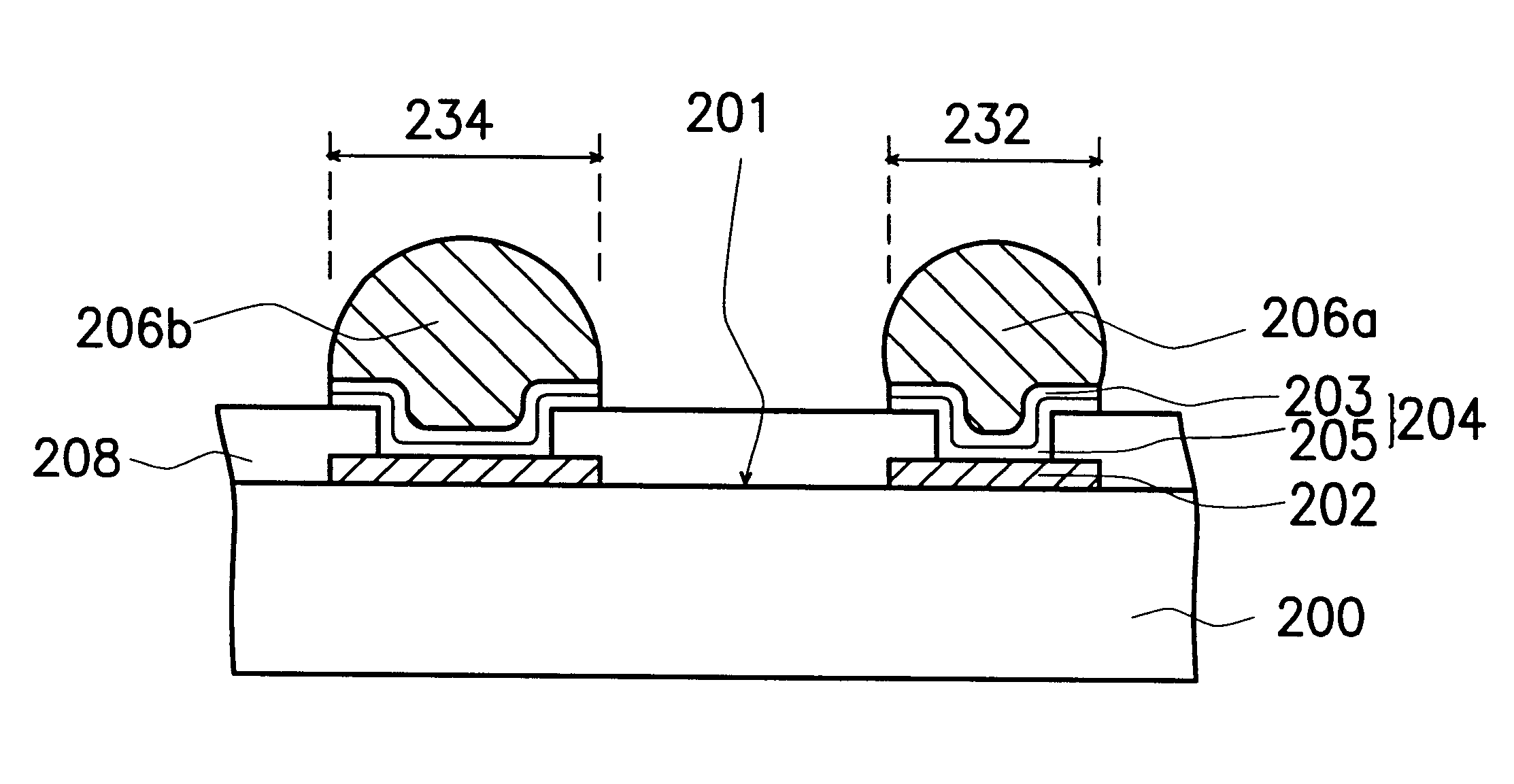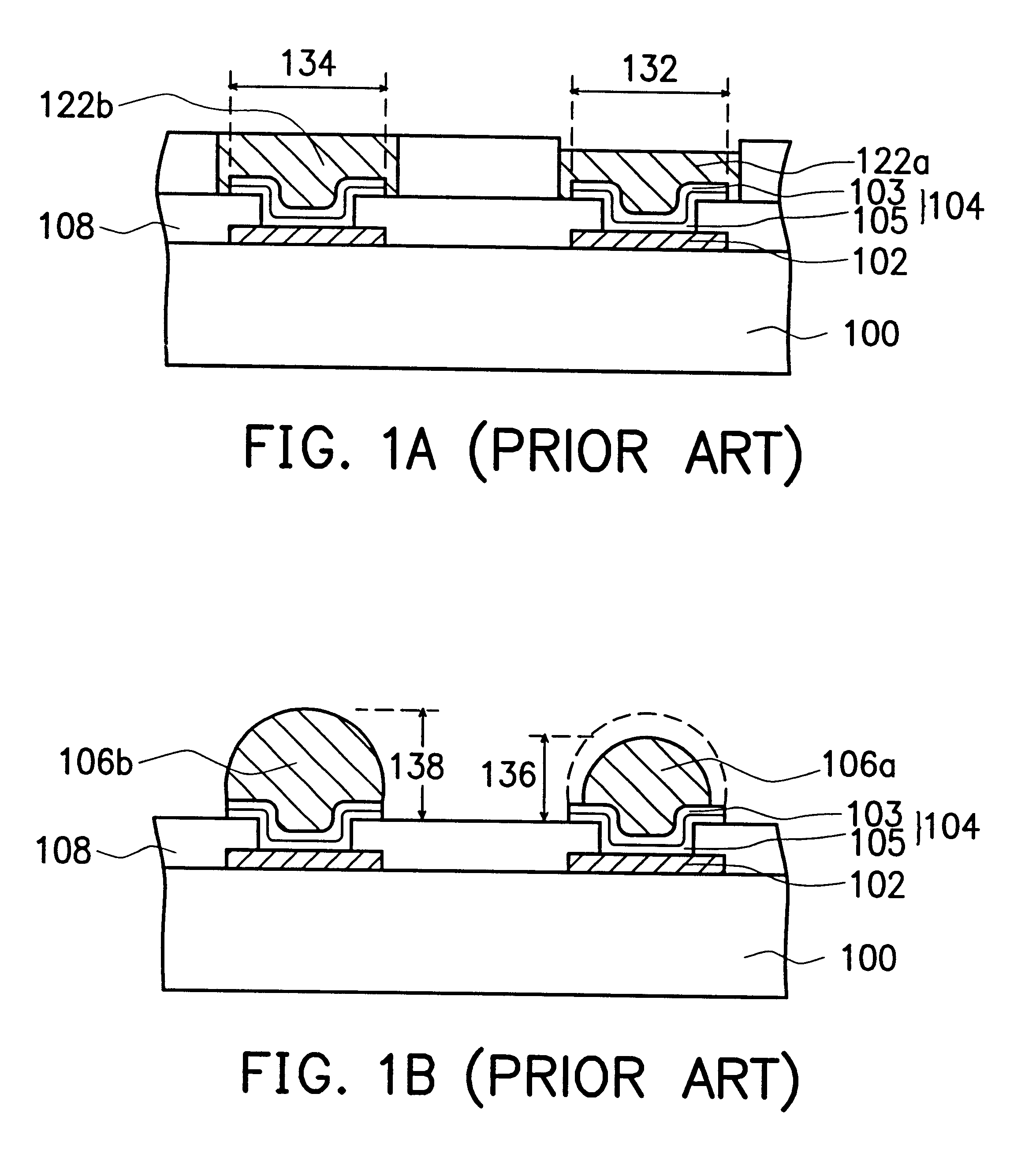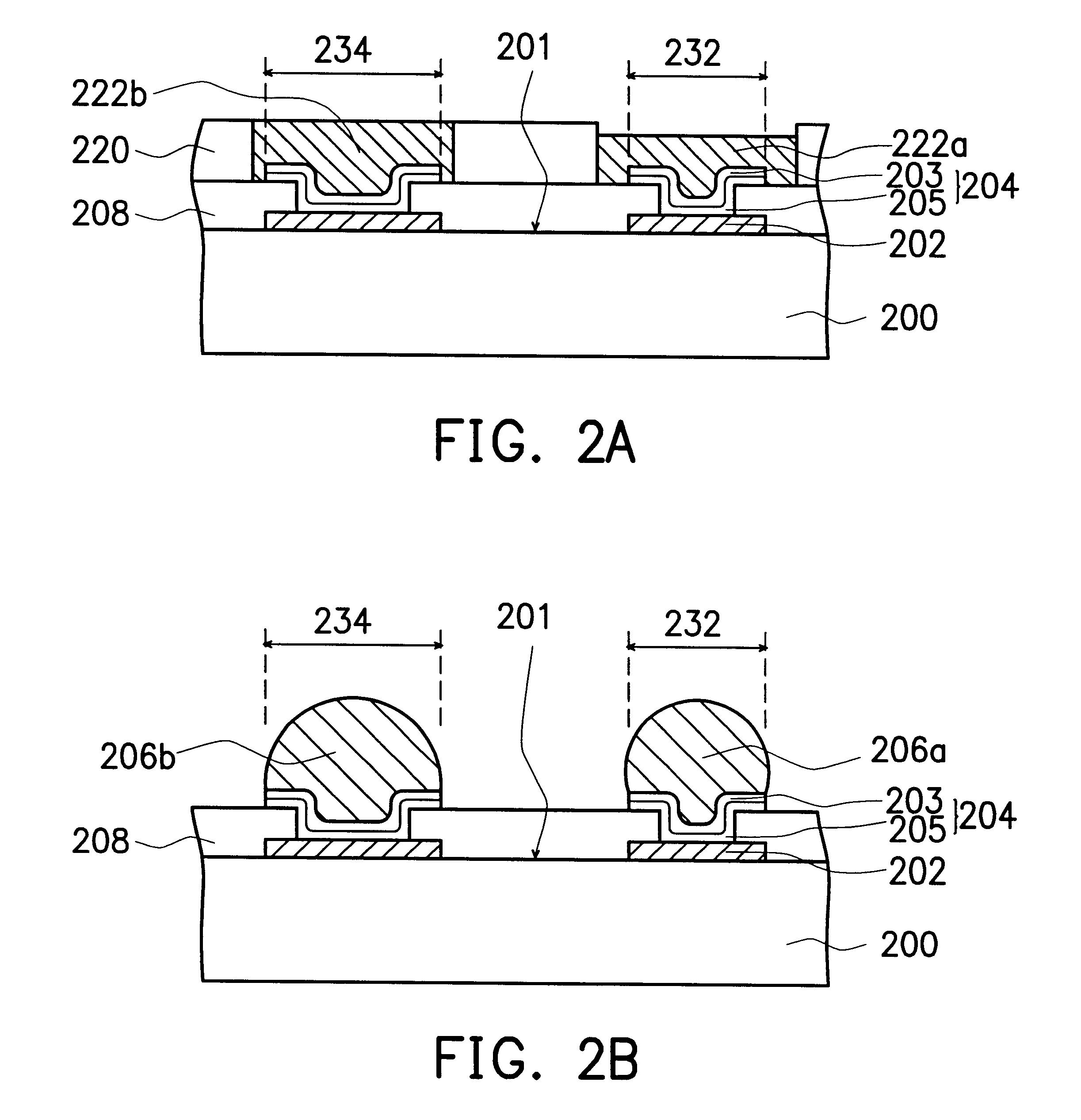Structure of solder bumps with improved coplanarity and method of forming solder bumps with improved coplanarity
a technology of coplanarity and solder bumps, which is applied in the direction of soldering apparatus, semiconductor/solid-state device details, manufacturing tools, etc., can solve the problems of uneven distribution of plating current density across the wafer, hard to electroplate solder bumps of uniform height all the way across the wafer, and uneven plating bump height. , to achieve the effect of improving coplanarity
- Summary
- Abstract
- Description
- Claims
- Application Information
AI Technical Summary
Benefits of technology
Problems solved by technology
Method used
Image
Examples
first embodiment
The present invention provides an under bump metal (UBM) structure of solder bumps with improved coplanarity. The UBM structure of the preferred embodiment of the present invention comprises various sizes of areas in order to control the height of solder bumps.
The process of forming the solder bumps begins after bonding pads have been formed on the top surface of the semiconductor wafer. In one known technique, after the bonding pads have been formed, an UBM layer is deposited on top of the semiconductor wafer (including the bonding pads) and covered with a photoresist layer. The UBM layer is placed on top of the semiconductor wafer because the solder material that is used to form the solder bumps does not readily adhere to the bonding pads. The protective layer of photoresist is then patterned and removed in the areas above the bonding pads utilizing known photolithographic processes. Removing portions of the photoresist in the areas above the contact pads exposes the UBM layer tha...
second embodiment
The present invention provides a method of forming solder bumps with improved coplanarity. FIGS. 3A and 3B illustrate a method of forming solder bumps on a UBM structure with improved coplanarity in accordance with a second preferred embodiment of the present invention.
Referring to FIG. 3A, a substrate 300 comprises at least one active surface 301, wherein a plurality of bonding pads 302 that formed on the active surface 301 are serving as connecting nodes to external circuits. The bonding pads 302 are made of aluminum, for example. A passivation layer 308 is formed over the active surface 301, wherein portions of the bonding pads are exposed by the passivation layer 308. The passivation layer 308 can be a polyimide layer but is preferably a silicon oxide layer, silicon nitride layer or layers of other passivation materials known to those having skill in the art. A plurality of UBM layers 304 are formed on the exposed portions of bonding pads 302. The UBM layers 304 have various ope...
PUM
| Property | Measurement | Unit |
|---|---|---|
| area | aaaaa | aaaaa |
| sizes | aaaaa | aaaaa |
| height | aaaaa | aaaaa |
Abstract
Description
Claims
Application Information
 Login to View More
Login to View More - R&D
- Intellectual Property
- Life Sciences
- Materials
- Tech Scout
- Unparalleled Data Quality
- Higher Quality Content
- 60% Fewer Hallucinations
Browse by: Latest US Patents, China's latest patents, Technical Efficacy Thesaurus, Application Domain, Technology Topic, Popular Technical Reports.
© 2025 PatSnap. All rights reserved.Legal|Privacy policy|Modern Slavery Act Transparency Statement|Sitemap|About US| Contact US: help@patsnap.com



